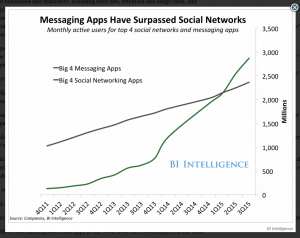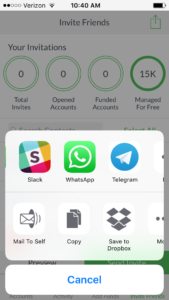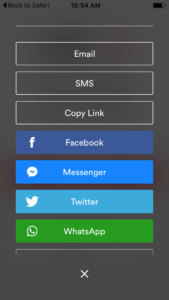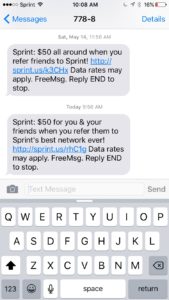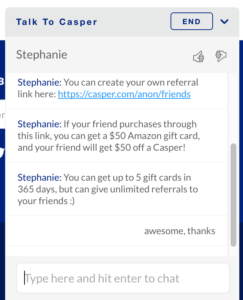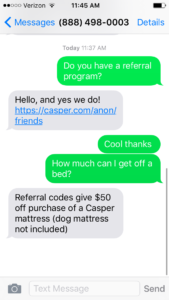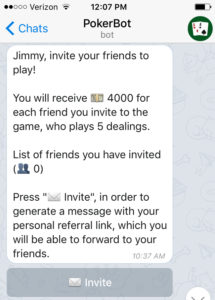Just when you thought you figured out social media, everything changed again.
Consumers—especially millennials—are showing a clear preference for private messaging as opposed to mass broadcasting tools like Facebook and Twitter. Those social media tools aren’t going anywhere, but they are just the tip of the iceberg when it comes to the way people communicate online.
A report from Business Insider found that the four most popular private messaging apps had surpassed the four most popular social networks in active users.
Perhaps the most interesting (and powerful) aspect of messaging apps is their flexibility. Users can chat with people and bots. Within a single app, like WhatsApp, Facebook Messenger, Kik or Telegram, a user can toggle back and forth between group text messaging, game bots and messages from brands. Here’s a look at my own Telegram app, where, in the last hour, I’ve played Poker, checked the weather, set a reminder to let the dog out and made plans with a friend.
Integrated messages increasingly make more sense than separate apps. That may come as a huge relief to retailers hesitant to invest in building native mobile apps, but eager to engage with their mobile customers. Intercom VP of Product Paul Adams predicts the end of apps as we know them: “The idea of having a screen full of icons, representing independent apps, that need to be opened to experience them, is making less and less sense.”
What will make sense is to leverage existing messaging platforms to communicate with customers one-on-one, either with humans or bots.
So, you want to use chat for your business?
Unlike email or social, users have much more control over the messages they receive. Messaging is more interactive too. Users can speak directly to a person that can help them or to a bot that can place an order, get personalized news or answer questions about a product.
Mark Schaefer points out on Harvard Business Review that “for most brands, 80 percent to 90 percent of all online fans communicate through ‘dark social media,’ meaning text messaging, email, and other channels we can’t see or measure.”
Brands tend to migrate to places where people like to communicate. It happened with email, it happened with social media and now it’s happening with messaging.
As you adapt to this changing environment, there are a few important things to consider.
1. Mobile sharing is the best place to start.
This is the first tier of referral marketing through messaging apps. That’s a kind way of saying everyone should already be doing at least this much. Chat apps are used primarily on mobile devices, which means you need to consider the platform as you build and refine your referral strategy. It’s impossible to account for all the different ways people share, so it’s often best to rely on native sharing—the sharing options already built into mobile operating systems like iOS and Android—to account for all the apps people are using to communicate.
Wealthfront has invested heavily in referral marketing, but keeps the sharing process lean to eliminate distractions. Users are already familiar with the native menu sharing on iOS and Android, so this is generally the easiest way to encourage referrals.
Airbnb uses custom APIs to create a more sophisticated experience. They support a number of messaging apps, but only show options for the apps that are already installed on the user’s device. In this example, WhatsApp is only shown because the app is already installed on the user’s device. With a little more customization, Airbnb could choose to only show contacts who are not current customers to make it easier to identify friends to refer. Perhaps most importantly, Airbnb is able to collect a lot more data about their advocates and about their program.
2. Message marketing is powerful. Really powerful.
To give you an idea of just how powerful messaging can be, consider that Mobile Marketing Watch reported a 98% average open rate for SMS marketing. Compare that to 20% for email and it’s easy to see why brands are so interested in messaging apps. Here’s are a couple of texts I received from Sprint.
This interaction certainly illustrates why referral and SMS are perfect partners. And beyond requests for recommendations, common retargeting tactics are now happening via SMS. I love this example from Zulilly. After searching for Clark shoes on clothing website Zulily, I received this Facebook message a few days later.
It’s not hard to imagine using Facebook Messenger as a channel for referrals. And it’s possible through the Messenger SDK connected to your referral platform.
Message marketing can happen through website live chats, text messaging, Twitter direct messages and apps like Facebook Messenger. These platforms are conversational—that’s why users love them—so people will use them in all kinds of different ways.
The line between marketing and customer support is blurry, which is both an opportunity and a challenge. Take mattress maker Casper, a company that has totally embraced 1:1 messaging. It’s easy to start a conversation with a support rep on their website’s live chat and through text messaging. And in each case, reps are prepared to mention and explain referral marketing.
It’s important to remember that people bounce around from one platform to another frequently. Just because a customer uses SMS to reach out doesn’t mean that’s the best way for them to refer their friends.
3. Bots are the future.
The biggest challenge with message marketing is scaling personal conversations. There are plenty of tools that make this easy for humans to manage. Buffer’s Respond turns Twitter into a help desk and they are currently building out support for Facebook Messenger as well. Tools like Zingle connect hotel and restaurant customers directly to staff that can answer their questions.
That’s a good fit for many companies, but others are turning to bots to automate some of the tedious work. Chipotle, for example, built a simple SMS bot that allows customers to place orders via text message. Bots are increasingly popular on platforms like Kik and Telegram.
PokerBot is a game that is played entirely through Telegram. Because of its social nature, it encourages users to invite friends and earn more (fake) cash to play poker with.
In China, more than 700 million people rely on WeChat to communicate with friends and businesses. Many of those business conversations are being had with bots. Archana Madhavan writes on the Amplitude blog that it’s so popular that, “Its users frequently report spending almost no time in other apps because so much of what they need to do can be done in WeChat.”
Bots are far from perfect. Most can only handle simple commands, but as more platforms enable bot development and users become more comfortable with the idea of communicating with businesses in their chat applications, we’re sure to see more automation.
The implications for referral marketing are incredibly exciting. Businesses will be able to segment and communicate with their customers—automatically, of course—with precision. Bots will help us understand how people like to communicate, share and learn. Conversions, not campaigns, will be the default.
The landscape is changing quickly, but it’s a welcome change for users. And the businesses that take cues from their customers are the ones that will succeed in this new world.


